HRP-2
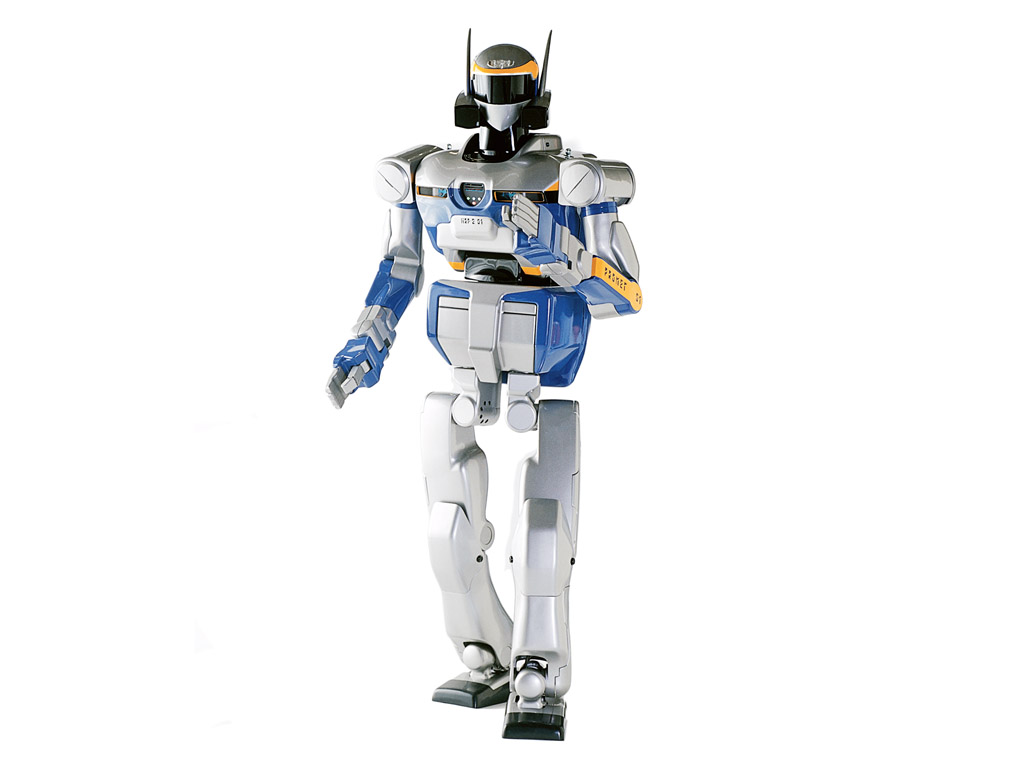
HRP-2L was developed by AIST and Kawada Industries Inc. in 2001. HRP-2L was a 12 DOF biped robot with 1413 mm height and 58.2 kg weight, which consisted of the leg mechanism, a Pentium III control computer, batteries, and a dummy weight of 22.6 kg. The robot is powered by brushed DC motors paired with harmonic gearboxes of a ratio of 1/160. The highest powered motor is the knee at 150 watts. The robot’s frame is made from cast magnesium alloy. The cantilever type structure, which reduces collision between the thighs, gives the following advantages: a wide area of landing point for swinging leg and cross-legged walk (like on a balance beam).
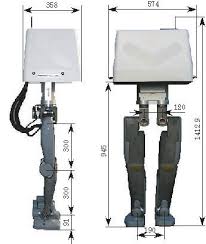
HRP-2A, a dual armed upper torso, was developed independently from the leg module. It has 6 DoF per arm and 1 DoF per gripper.
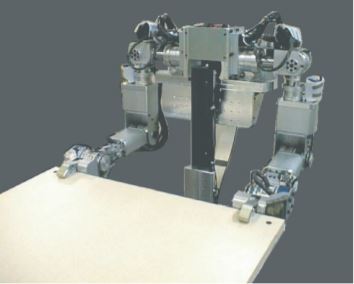
After the successful development of HRP-2L and HRP-2A, HRP-2P was developed by AIST, Yaskawa Electric Corporation, and Kawada Industries Inc. in 2002. HRP-2P has pitch and yaw DoFs in its waist, allowing it to get up from the floor (HRP-1 did not have these DoFs).
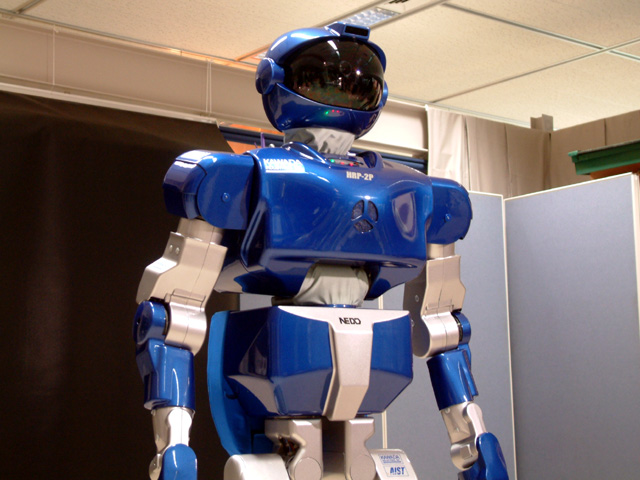
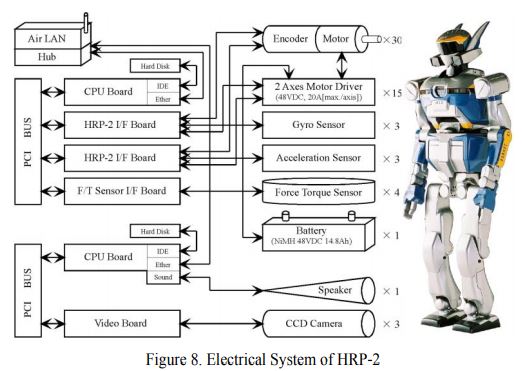
Mr. Yutaka Izubuchi designed the distinctive appearance of HRP-2, which only differs in height and weight slightly from HRP-2P. However, there are several internal differences. For example, the mechanical links were designed using FEM analysis to increase rigidity which was necessary for stable walking. Another improvement was the cooling systems that ventilates the inside of the body and links, which prevents overheating of the motors and electronics. HRP-2 can walk for 60 minutes at 1.25 km/h compared to HRP-2P that can only walk for 20 minutes at 0.675 km/h. This improvement is due to HRP-2 using more powerful motors for the legs, having a motor cooling system, and having a “better” battery pack.
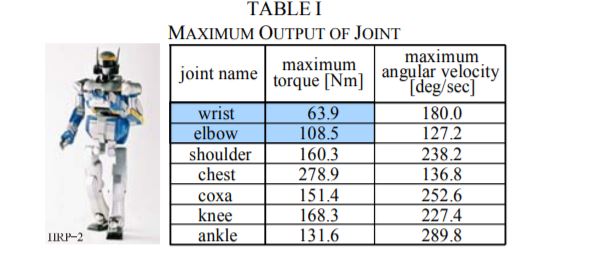
Variants:
HRP-2LR:
HRP-2 running leg module (HRP-2LR) is a modified version of HRP-2L that reduces the weight in order to increase possible running speed (height 127 cm, weight 31 kg, total 12 degrees of freedom). World’s first successful running with a human-sized two-legged robot with a height of 120 cm or more. First free running humanoid was Sony’s Qrio, and Asimo gained the ability to run in 2004.
HRP-2LT:
HRP-2LR was later modified by adding a passive toe joint for each foot. The toe spring was used to accumulate and release energy during running. The robot was successfully able to hop. The researchers were able to make HRP-2LR run at 3 km/h in simulation and hoped to reach the same speed on hardware. This information was taken from the paper ZMP-based Biped Running Enhanced by Toe Springs.
HRP-2W
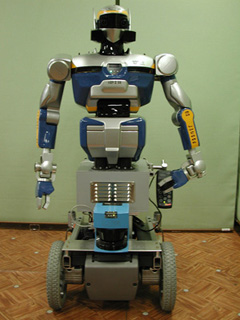
Developed by the Jouhou System Kougaku Laboratory at the University of Tokyo, HRP-2W is an upper body of HRP-2 made by Kawada Industries mounted on an electric wheelchair made by Inavacare. The upper body has two DOFs in the neck, seven per arm, two for waist, for a total of twenty. The height can be adjusted from 141 cm up to 171 cm.
HRP-2V
Also developed by the JSK lab at University of Tokyo, HRP-2V is the upper body of a HRP-2 mounted on a base with omnidirectional wheels.
HRP-2VZ
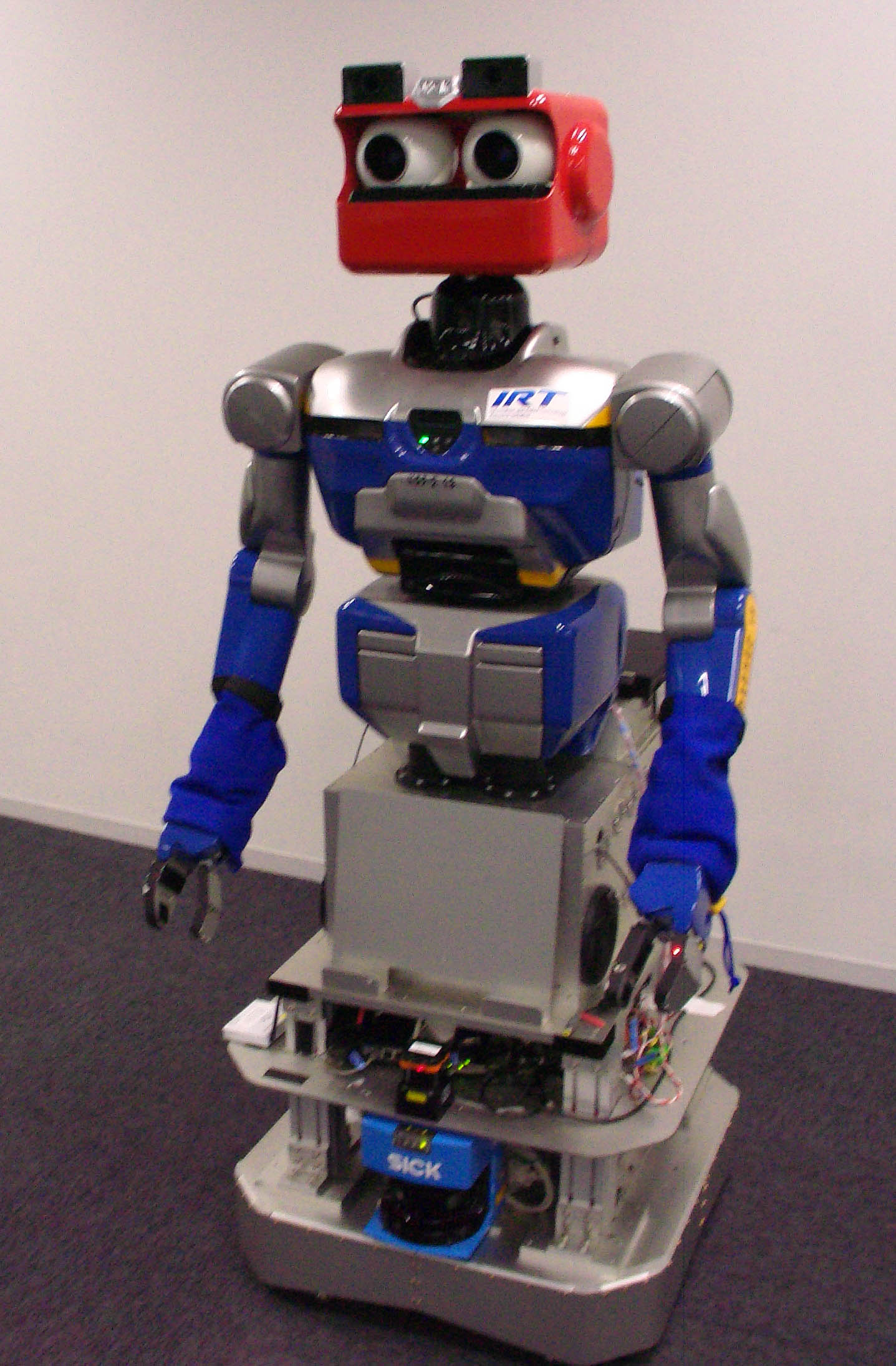
Also developed by the JSK lab at University of Tokyo, HRP-2VZ is a HRP-2 upper body mounted on either a rugged wheelchair base or omnidirectional base. The robot has two Pairs of stereo cameras; one with high zoom lenses, the other with fish-eye lenses which can capture omni-directional images.
HRP-2FX
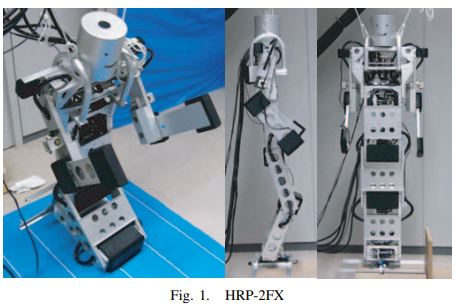
Constructed as a cheaper way to test dynamics of a falling humanoid robot.
HRP-2M
AIST in partnership with General Robotix and Moving Eyes, Inc. developed a 35 cm tall hobby robot with 20 DoF. Retailing for $4,450, this was aimed at researchers that could not afford a full-size HRP-2. (Note: Engadget article says HRP-2 could be rented for a year for $70,000)
HRP-2Kai
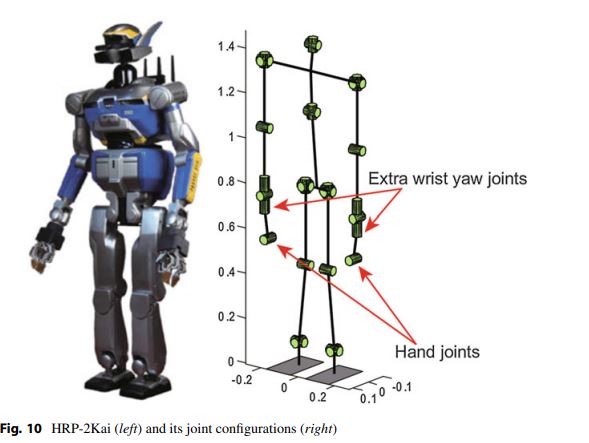
In order to meet the tight deadline for the DARPA Robotics Challenge, existing HRP-2’s were modified instead of designing a completely new robot. First, the robot was equipped with a laser range finder on its head (UTM-30LX-F) as well as four CCD cameras. The leg and arm links were modified 10 cm longer from the original. Both wrists got a yaw joint that was not on the original HRP-2. Team AIST-NEDO scored 5 points in 52 minutes and 30 seconds at the DARPA Robotics Challenge. Not sure if team HRP2-TOKYO used a HRP-2 or HRP-2Kai, as their robot has some modifications to it.
Where are they today?
According to Toward Industrialization of Humanoid Robots, 20 copies of HRP-2 have been built.
One HRP-2 is part of the Science Museum Group’s traveling exhibit called Robots. More info at https://www.sciencemuseumgroup.org.uk/our-services/partner-with-us/touring-exhibitions/robots/
One HRP-2 was on display at the Miraikan science museum in Tokyo in January of 2012 (by January 2021 it was no longer on display). One HRP-2 was on display at the Science Museum in Kitanomaru Kōen, Chiyoda, Tokyo, Japan between 2006 and 2012 as part of the NEDO exhibit (which itself ended in 2017).
One HRP-2P is on display at Science Square TSUKUBA as part of the “Wonders of Science” exhibit. One HRP-2 is currently on display at the Cité des sciences et de l’industrie in France.
